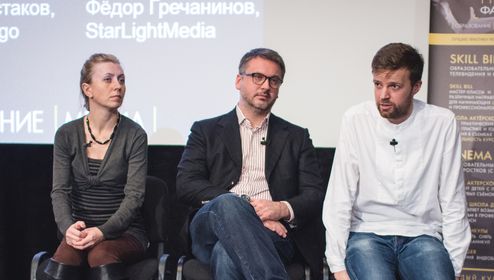
November 10 FILM.UA Faculty held a master class within Skill Bill Start "New Media. Internet platforms. New opportunities for content monetization".
We offer you a brief summary of the master class
Artyom Vakalyuk, head of the analytical department at Media Resources Management
According to Wordstat, the number of Internet users worldwide in the first half of 2015 was 3.8 billion people, which is almost half the world's population. Currently, there are 924 million of Pay-TV subscribers. Half of them are located in Asia, and the rest is scattered around the world. When considered in detail the highest internet penetration rate is in North America - 87.9%, when in Europe it is 73.5%.
VoD platforms are divided into 4 types:
The total market volume in 2014 was estimated at $21 billion, and by 2020 the estimated market volume will be $51 billion, so the projected growth in 6 years - the market will increase 2.5 times.
Tatyana Shershneva, FILM.UA Distribution
When forming the cost and time when rights will come into effect is very important to understand which model each platform uses.
License fee (royalty):
Factors affecting pricing:
Foreign platforms' criteria for the selection of content:
You have to work on the content in order to monetize it! If you just put the content on the platform, it probably won't bring any income.
Monetization of content on YouTube:
Fedor Gretchaninov, director of strategic development at StarLightMedia
Types of online TV content distribution:
Variations content distribution channel on the web:
FILM.UA Group
22, Mykoly Zakrevskoho str., Kyiv, 02232, Ukraine
tеl.: 0 800 308 028, +380 44 501-39-71 fax: +380 44 546-68-97 e-mail: info@film.ua
Developed by Argentum IT Lab
